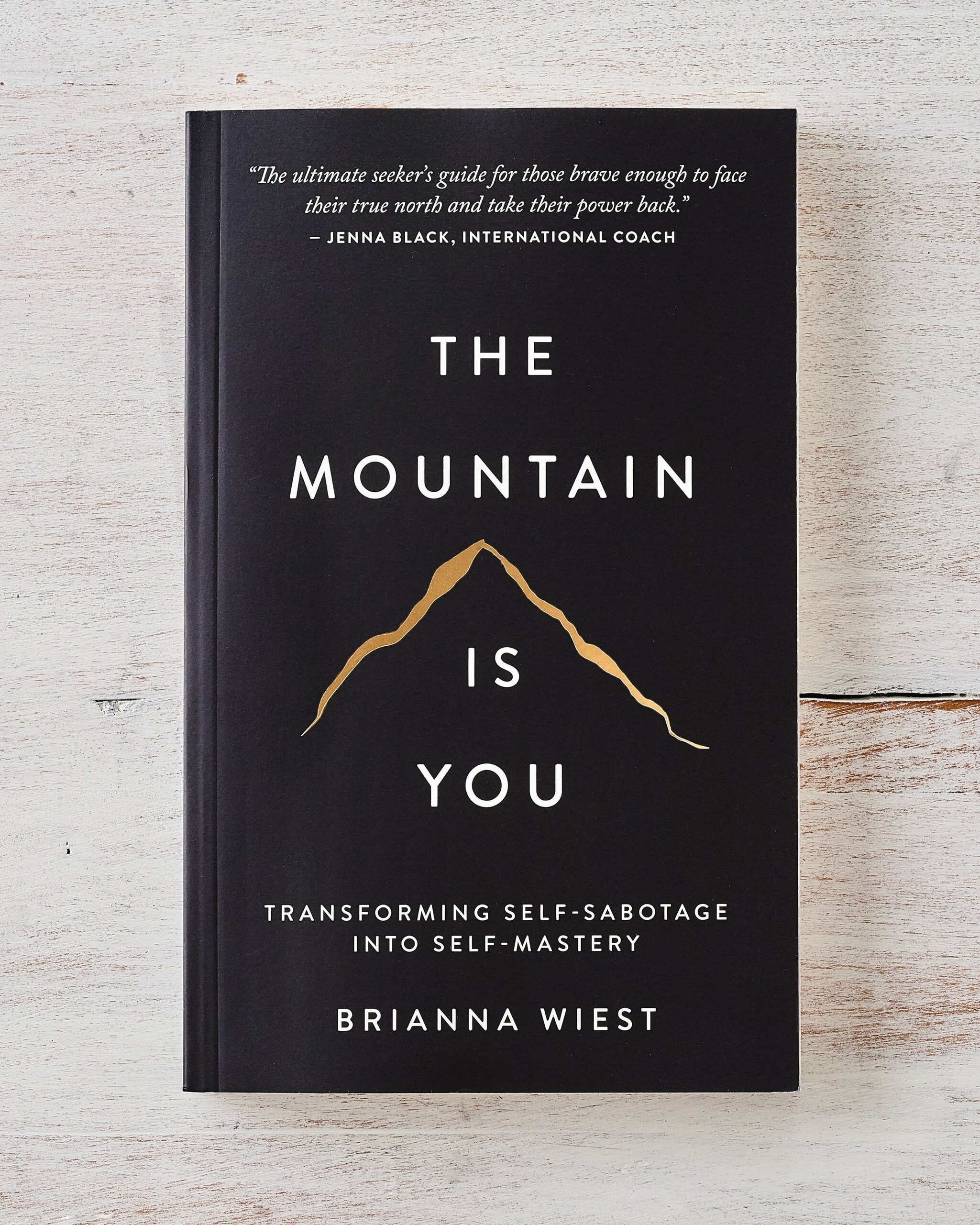The Mountain Is You by Brianna Wiest delves into the concept of self-sabotage—why we do it, when it happens, and how we can stop it. At its core, this book is about transforming your mindset, breaking old, harmful patterns, and embracing personal growth. The “mountain” symbolizes the internal struggles we face and represents the journey toward becoming the person we are meant to be.
Whether you’re struggling with procrastination, fear of success, or negative self-talk, this book is designed to help you understand why these behaviors occur and, most importantly, how to break free from them. It’s a call to acknowledge the obstacles within ourselves and find the strength to climb toward our full potential.

Why We Self-Sabotage
Self-sabotage is often misunderstood. It’s easy to view it as a failure, but it’s actually a signal that something within us needs attention. When we sabotage our own efforts, we are usually responding to deep-seated fears, insecurities, or limiting beliefs.
One of the primary reasons we engage in self-sabotage is because change feels threatening to our sense of safety. Staying in familiar patterns, even if they’re holding us back, can feel less risky than stepping into the unknown. The comfort zone becomes a prison that keeps us stuck, even if we’re unhappy there.
The key to overcoming self-sabotage is understanding the underlying causes. We often repeat harmful behaviors because we’re trying to protect ourselves, even if that protection is misguided. Once we identify the patterns and acknowledge their origins, we can start the process of healing and growth.
How to Overcome Self-Sabotage
1. Recognize the Patterns
The first step in overcoming self-sabotage is to recognize the patterns that keep you stuck. Common behaviors include:
- Procrastination: Putting things off because of fear, perfectionism, or a lack of self-belief.
- Negative Self-Talk: Constantly telling yourself you’re not good enough, capable enough, or deserving of success.
- Fear of Success: Deep down, you may fear the responsibility, expectations, or changes that come with success.
By noticing these patterns in your life, you can begin to dismantle them. Acknowledge the moments when you fall into these behaviors, and examine why they happen. Awareness is the first step toward change.
2. Rewire Your Mindset
The next step is to change the way you think. Growth begins when you replace limiting beliefs with empowering ones. Instead of thinking, “I’m not good enough,” reframe it to, “I am capable of learning and improving.”
A positive mindset is crucial to overcoming self-sabotage. Challenge the negative beliefs that hold you back and replace them with affirmations of self-worth. The more you practice reframing your thoughts, the more natural it becomes to think in ways that support your growth.
3. Embrace Discomfort
Change is uncomfortable. It challenges our old beliefs, habits, and patterns. But it’s in that discomfort that we grow. Resistance to change is often what keeps us stuck, but embracing discomfort is a powerful way to push past self-sabotage.
Growth happens when we are willing to step outside our comfort zones, take risks, and face the challenges head-on. The discomfort of growth is temporary, but the rewards are lasting.
Turning Struggles Into Strength
Your struggles are not roadblocks—they are opportunities for growth. The challenges you face on your journey are not meant to break you, but to shape you into a stronger, more resilient version of yourself.
The process of transformation is much like climbing a mountain: it requires effort, resilience, and a deep trust in yourself. There will be moments when the climb feels impossible, when you doubt your strength or question your path. But the only way forward is through. Keep climbing, even when it feels difficult—because that is where the real growth happens.
Each step up the mountain is a step toward your fullest potential. With every challenge you face, you build more strength, confidence, and clarity.
Who This Book Is For
The Mountain Is You is for anyone who feels stuck in a cycle of self-doubt and fear. If you find yourself repeating harmful patterns, afraid of change, or struggling with negative self-talk, this book will help you understand why it’s happening and what you can do to overcome it.
This book is for those who are ready to break free from limiting beliefs and build a life rooted in confidence and personal growth. If you’re ready to take full ownership of your potential and embrace the journey of transformation, The Mountain Is You is for you.
Final Thoughts
The mountain you face in life isn’t there to stop you—it’s there to make you stronger. The obstacles within yourself, whether they are fears, doubts, or self-sabotaging behaviors, are not roadblocks; they are the very path to your growth.
Once you reach the top of the mountain, you’ll realize that it was never the obstacle—it was the path that led you to your true potential. The climb might be challenging, but with each step, you are becoming the person you were always meant to be.
So, let’s start climbing.
FAQs
1. How do I know if I’m self-sabotaging? You might be self-sabotaging if you frequently procrastinate, engage in negative self-talk, or avoid taking action due to fear of failure or success. The key is recognizing these patterns and understanding their origins.
2. How can I stop procrastinating? Start by identifying the underlying causes of your procrastination, such as fear or perfectionism. Break tasks into smaller, manageable steps, and focus on progress rather than perfection. Cultivating self-compassion and reframing your thoughts will also help you overcome procrastination.
3. Can I rewire my mindset? Yes! Rewiring your mindset involves replacing limiting beliefs with empowering ones. Challenge negative thoughts as they arise, and practice affirmations that build confidence and self-worth. The more you do this, the more it becomes your default way of thinking.
4. Why is embracing discomfort important? Discomfort is a sign of growth. When we step outside our comfort zone, we learn, adapt, and expand our capabilities. Embracing discomfort allows you to break free from self-sabotage and become more resilient in the face of challenges.
5. How do I stay motivated during the difficult parts of the journey? Stay focused on your “why”—why you started in the first place—and remind yourself that each step, no matter how small, is progress. Celebrate small wins along the way, and trust that the challenges are helping you grow stronger.






